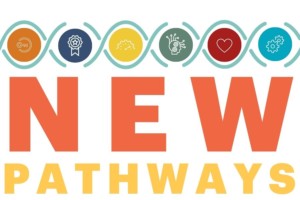Guided Pathways and Meta-Majors

My oldest son, who will graduate from college in June of 2020, leaves in a month for an internship in Los Angeles. My youngest son heads off to college, again in LA, in August. I constantly think about their pathway through college and wonder if they will be prepared to enter the workforce.
My children are prime examples of the importance of support networks and effective mentors. They are carving their own pathway, but they have road maps, field guides, and camp counselors to help them along the way.
This should be the case for all students. Because of the Guided Pathways and Meta-Majors programs being adopted in community colleges and four-year universities we are beginning to see the broad-scale benefits of such support.
Most attribute the birth of this movement to the 2015 publication of Redesigning America’s Community Colleges by Thomas Bailey, Shanna Smith Jaggars, and Davis Jenkins. The authors argue that community colleges are beset by a significant problem: Low graduation rates, especially among economically challenged students. They also argue that isolated programmatic interventions will not suffice.
Their solution, based on an analysis of two decades of research, calls for colleges to “create clearer, more educationally coherent pathways to credentials that in turn prepare students for success in the workforce and further education in fields of economic importance to their regions.”
As of 2018, more than 250 community colleges have committed to large-scale and long-term implementations of Guided Pathways reforms. These programs are intended to support student success in four areas:
- Mapping pathways to student end goals;
- Helping students choose and enter a program pathway;
- Keeping students on path;
- Ensuring that students are learning.
A Guided Pathways approach attempts to solve a design flaw that dates to the origin of community colleges: They were founded with a mission of providing broad access to higher education and thus focus on attracting as many students as possible via the offering of hundreds of diverse courses. In essence, community college students suffer from the “paradox of choice” and struggle, often without effective guidance, to complete the requirements needed to matriculate.
The related development of Meta-Majors provides another programmatic change that brings coherence to the degree/certification process. According to author Julia Haskins, “Meta-majors, sometimes referred to as career clusters or communities of interest, group individual majors under a larger academic umbrella. These programs provide students with a clear pathway to graduation, and help them make connections between their studies and different career tracks.”
For example, a student who wants to pursue a career in health care could enroll in a meta-major that requires a steady dose of health-focused courses in fields as diverse as biology, communication, or statistics. This meta-major exposes the learner to a variety of related career options and presents them with a wider pathway to success.
In a best practice, universities and colleges would ideally align the meta-major menu to the needs of the local and regional labor market.
The state of Florida in 2013 required all community colleges to adopt meta-majors in eight areas of studies, including business, education, health science, and public safety. Innovative universities such as Arizona State and New Mexico State have adopted meta-majors as well.
Georgia State University offers a good example of how this works in the field. When students register they are required to enroll in one of seven meta-majors. Once enrolled, students are given a choice of several block schedules, which are pre-populated with courses relevant to their pathway. Students with similar schedules are assigned to Freshman Learning Communities of 25 each. They become part of a cohort that propels them toward graduation.
The team leading the Pathways initiative at the American Association of Community Colleges has created an infographic that concisely explains the Guided Pathways process. As you can imagine, there are a few essential conditions that make the programs more likely to succeed. Among these conditions are:
- Strong change leadership throughout the institution
- Faculty and staff engagement
- Commitment to using data
- Capacity to use data
- Technology infrastructure
- Professional development
- Favorable policy
- Commitment to student success and equity
Technology infrastructure is one of the eight essential conditions, and it deserves a closer examination. I constantly hound my sons about their transcripts and how they map to graduation requirements, college entrance requirements, and the whims of the labor market. This usually involves me downloading a worksheet in PDF form and hand-writing data from transcript to worksheet.
The team at the Community College Research Center has posted a screenshot (see below) of a sample student dashboard that tracks Guided Pathways progress. In one mobile-friendly screen, we can examine the student’s current schedule, grades, advisor contact info, and a pie chart that shows progress towards a degree or certificate.

My state is nearing the end of a two-year experiment called California Guided Pathways. More than 20 community colleges participated in a pilot in which they agreed to “implement an integrated, institution-wide approach to student success by creating structured educational experiences that support each student from point of entry to attainment of high-quality postsecondary credentials and careers.”
The broad and bi-partisan appeal of Guided Pathways and Meta-Majors can be discerned by looking at the organizations that support the California project: American Association of Community Colleges (AACC), Center for Community College Student Engagement (CCCSE), Community College Research Center (CCRC), National Center for Inquiry & Improvement (NCII), WestEd, the Aspen Institute, Achieving the Dream, Jobs for the Future, and Public Agenda. The Gates Foundation is a major funder.
The need is clear. A solution is evident. It’s time for all learners to take a walk along a Guided Pathway toward their future of work and community engagement.
For more, see:
- Learning and Growing as Educators On A Busy Schedule
- Getting Started with Design Thinking
- Dear Novice Teacher, Let’s Talk Data
Stay in-the-know with innovations in learning by signing up for the weekly Smart Update.







0 Comments
Leave a Comment
Your email address will not be published. All fields are required.